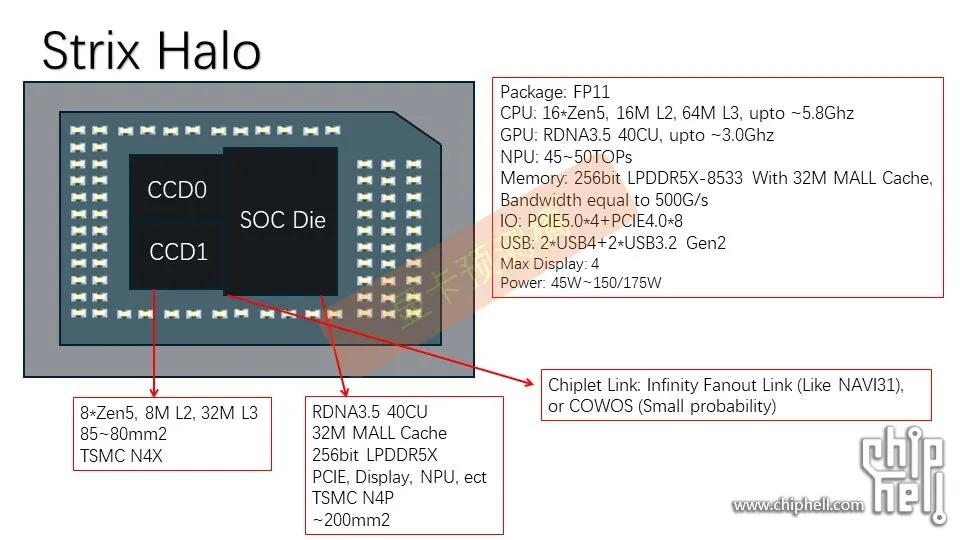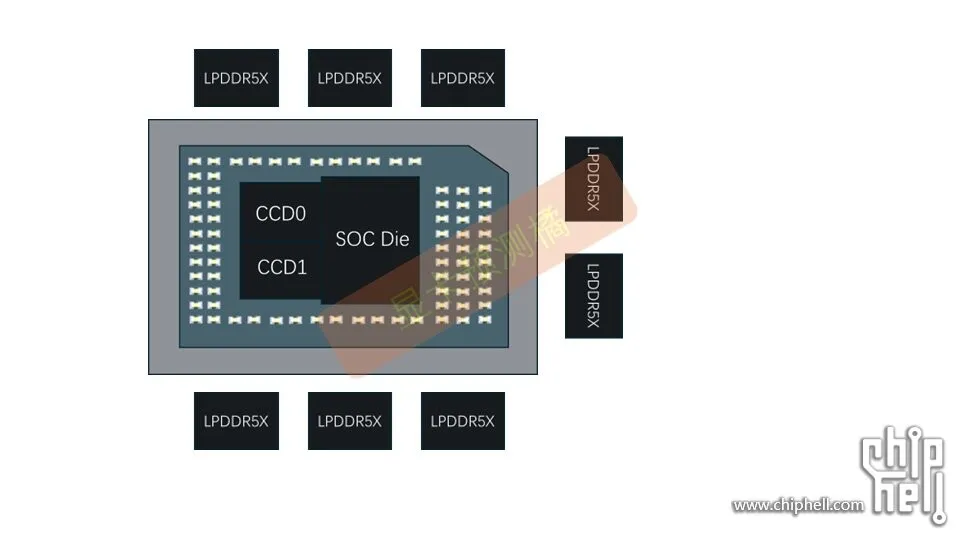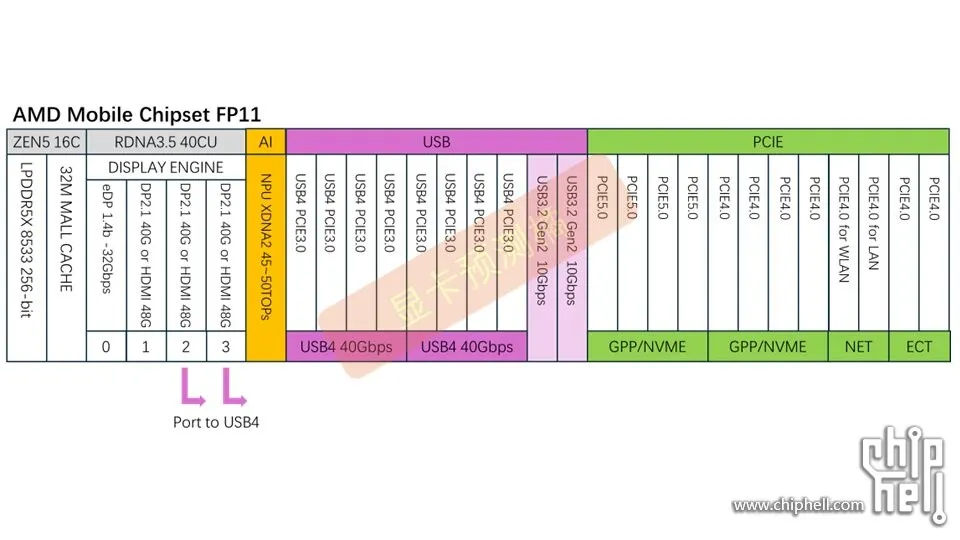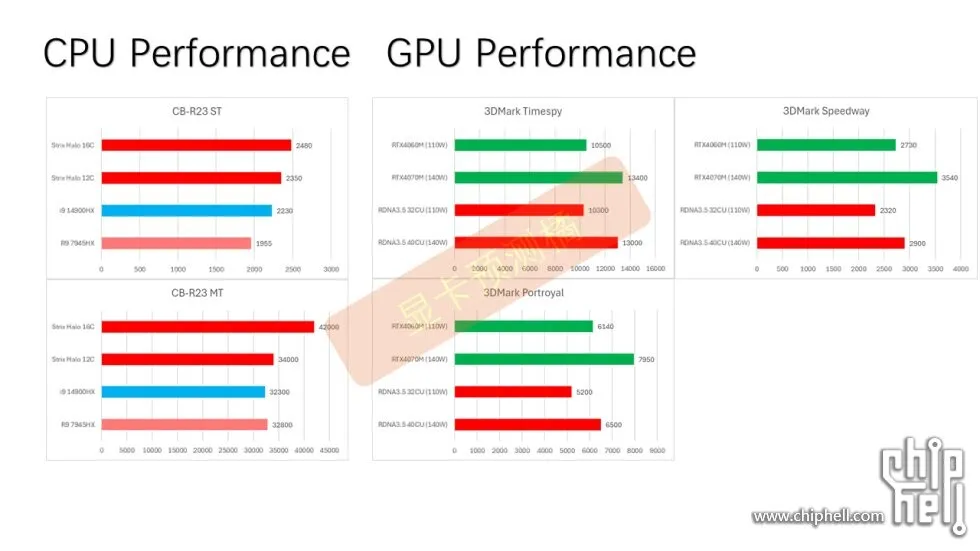A significant feature of the Strix Halo is its inclusion of one or two Zen 5 core chiplet dies (CCDs), which are linked together with a large System on a Chip (SoC) die. This SoC encompasses an enhanced integrated GPU (iGPU) and advanced 256-bit LPDDR5X memory controllers. This setup is an upgrade over AMD's similar processors like those in the Fire Range series, which use a different client I/O die setup. For example, the Fire Range processors are essentially the mobile version of the AMD Granite Ridge desktop processors and are intended for high-performance laptops.
The iGPU in the Strix Halo is built on the latest RDNA 3+ architecture, which includes 40 compute units amounting to 2,560 stream processors. It's also equipped with 80 AI accelerators, 40 Ray accelerators for enhanced graphics rendering, and 160 texture mapping units. This GPU is expected to operate at speeds up to 3.00 GHz. Additionally, it uses a 256-bit memory interface compatible with LPDDR5X-8533 memory, providing a high bandwidth of about 500 GB/s, and is supported by a 32 MB L4 cache.
Another innovative addition to the Strix Halo is its neural processing unit (NPU), similar to what's found in the Strix Point processors. This NPU, which leverages AMD’s XDNA 2 architecture developed by the Xilinx team, can deliver around 45-50 AI TOPS (trillion operations per second), enhancing tasks that require artificial intelligence.
The Strix Halo also features a more streamlined SoC I/O configuration compared to the Fire Range, focusing on better supporting the large iGPU. It includes 12 lanes of PCIe Gen 5 for connecting external devices, as well as high-speed USB connectivity options including 40 Gbps USB4 and 20 Gbps USB 3.2 Gen 2.
The processor itself can accommodate up to 16 Zen 5 cores. Each core chiplet die provides 32 MB of L3 cache, leading to a total of 64 MB if two CCDs are used. This amount of cache helps the processor handle more data quickly and efficiently, which is crucial for both gaming and professional applications.
Given its robust iGPU capabilities, the Strix Halo is expected to provide performance comparable to NVIDIA’s GeForce RTX 4060M and RTX 4070M GPUs. This highlights its potential to deliver powerful graphics performance in a small, mobile package, making it an ideal choice for users who need high performance without sacrificing portability.
Overall, AMD’s Strix Halo is an exciting development in the realm of mobile processors, combining powerful graphical performance with the versatility of a compact, portable device format. It stands as a significant competitor in the market, particularly against top contenders like Apple's M3 series, promising to push the boundaries of what's possible in ultraportable computing devices.
Sources: ChipHell Forums, harukaze5719 (Twitter)





